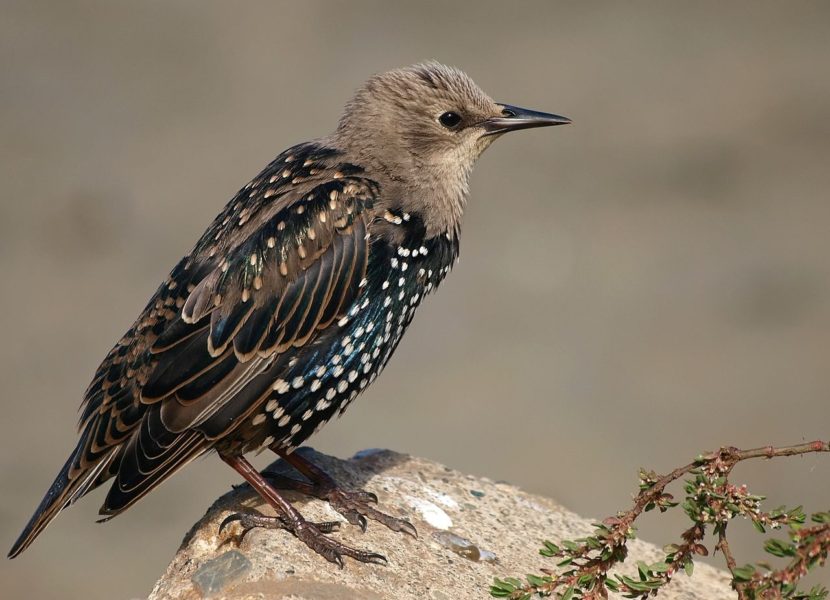
The Department of Fish and Game plans to trap a flock of birds not native to Alaska that is trying to move in. The agency says starlings could cause big problems for birds native to the area. They want to get rid of the flock before their numbers grow.
The trap sits near the entrance of Ben Walters Park near the northwest shore of Beluga Lake. It looks like a chicken run. It’s fenced in with one-inch chicken wire so smaller animals that Fish and Game doesn’t want to capture, can easily get out if they wander inside.
“In the center of it in the middle, it has a slope design with the roof coming down, and then large slats about an inch and a quarter [or] an inch and a half in diameter just big enough for a starling to get through to get down to a bait tray in the center of the trap,” said Herreman.
Jason Herreman, assistant area management biologist with Fish and Game, says starlings are an invasive species from Europe. They have a unique migration story. They were given a foothold in the U.S. in the late 1800s when Shakespeare fans released a number of the birds in New York City. Their goal was to bring every bird featured in Shakespeare’s work to the country.
But, as far as Herreman knows, starlings have never lived in the Homer area. He says starlings are cavity nesters and they could force other birds out of prime nesting spots.
“… such as chickadees, woodpeckers, nuthatches,” said Herreman.
“And then they also have been known to be a problem as far as crop degradation goes. With airports…here we are close to the air pond and the airfield here in Homer. Large flocks of these have been known to be quite problematic around airfields before,” said Herreman.
Fish and Game wants to trap the birds that are here before their numbers grow. Herreman says once a strong population is established it will be much harder to remove them from the area.
“I’m sure folks have noticed we have pigeons out on the spit. That’s a species previous biologists tried to get rid of when they first showed up in town. They weren’t necessarily successful and they have become established. And they’re a nuisance problem we get complaints about every year,” said Herreman.
Herreman says so far he’s only seen one flock of starlings in the area and it had between 35 and 40 birds.
He says other traps the same size as Fish and Game’s have held up to 100 birds at a time. He checks the trap every morning to make sure it’s not damaged and, of course, to see if he has caught anything.
“I’m unsure about that. Yesterday morning when I went and checked the trap, the trap had been tampered with. The lid had been ripped off and some of the wire pulled back. The screws had been unscrewed so it looks like it was a human who probably let something out of the trap,” said Herreman.
Herreman says trap tampering can be an issue no matter what animal is being targeted. He says Fish and Game clearly labels their traps to discourage people from bothering them.
“So folks know that it’s an official effort. It’s not just some individual trying to do something nefariously. But yeah, it’s not uncommon,” said Herreman.
The opening at the top of the trap is sized specifically for starlings but there is a chance for other animals to get locked in. If that happens, Herreman says he’ll let them out.
If a starling wanders into the trap he plans to leave it there in hopes it will call out to the rest of the flock and lure more of the birds inside. If the trap works, Herreman says, the birds captured will be euthanized.
